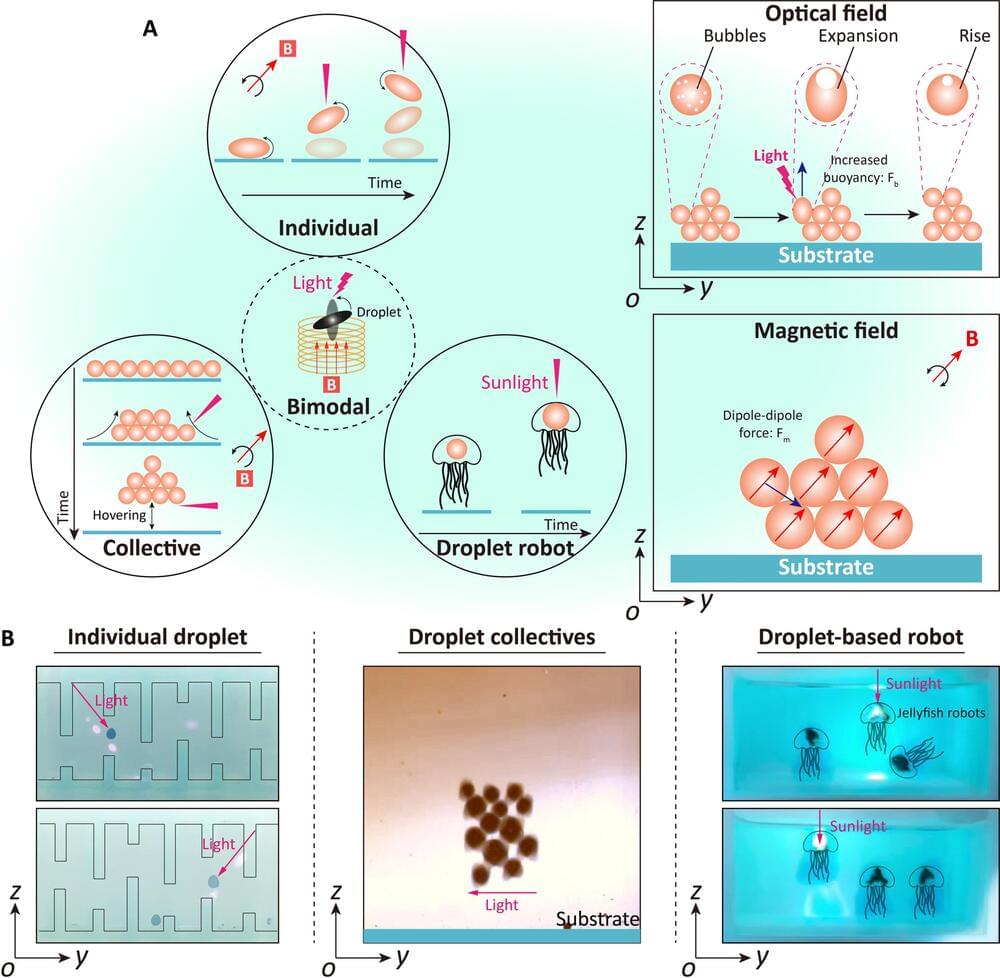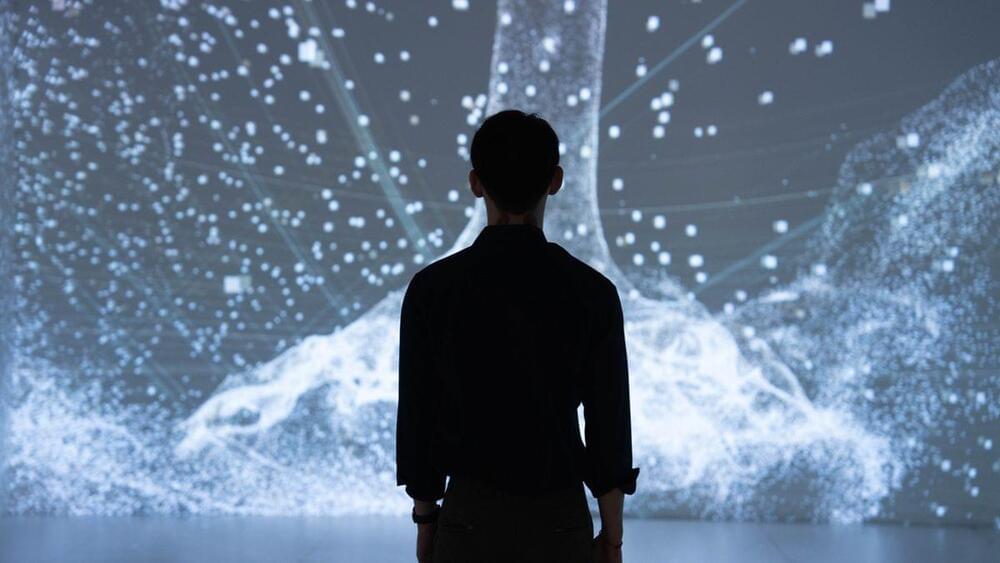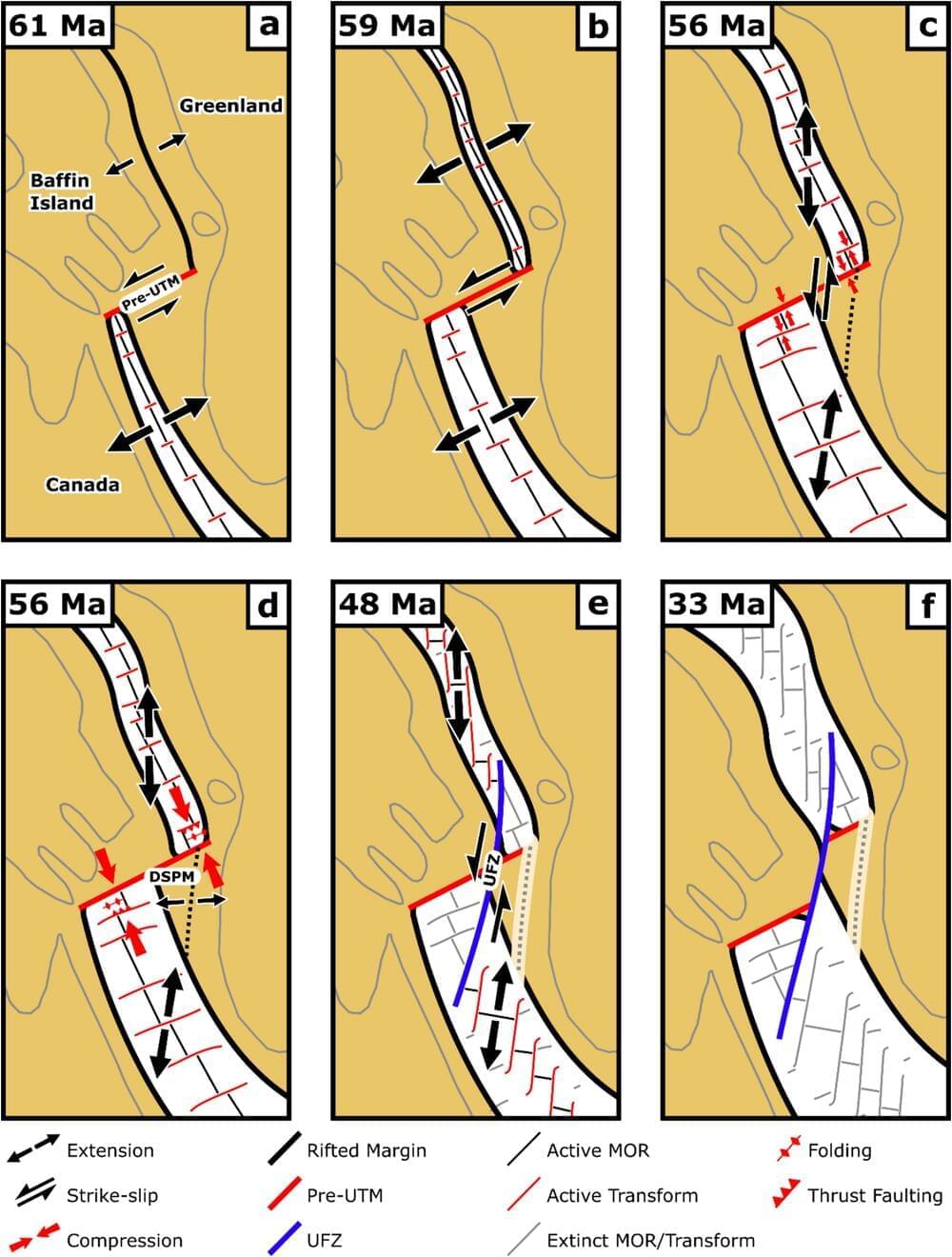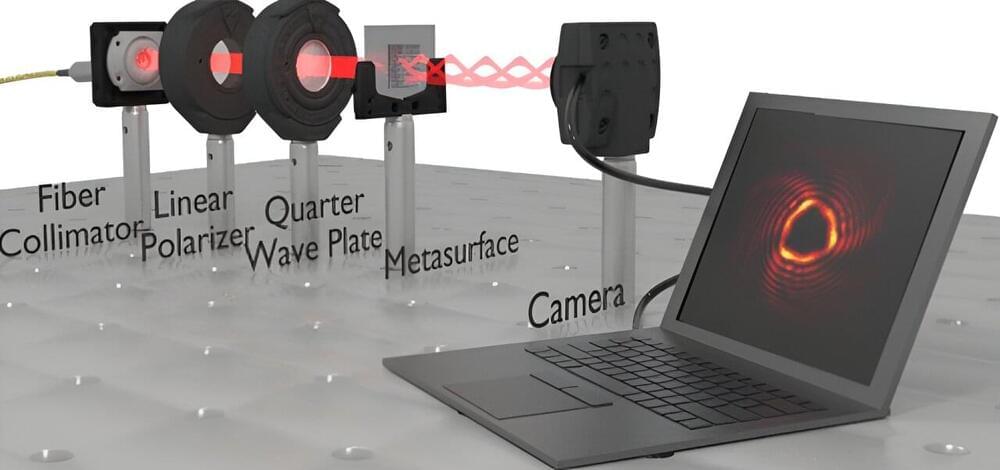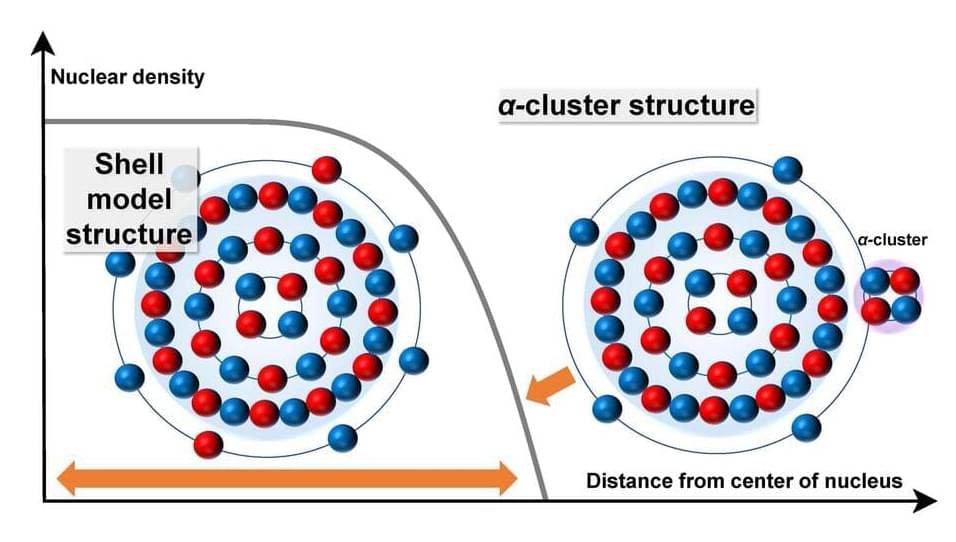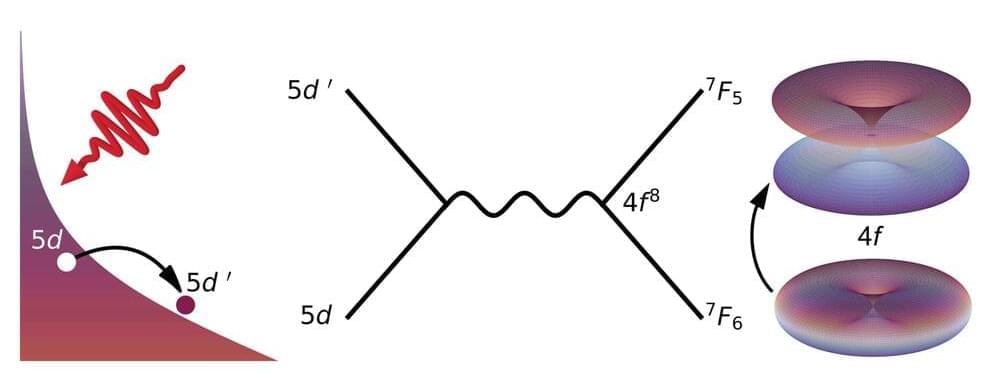Jul 20, 2024
Researchers use light to control ferrofluid droplet movements in water
Posted by Shailesh Prasad in category: particle physics
A team of engineers at the Max Planck Institute for Intelligent Systems, the Chinese University of Hong Kong and the Gwangju Institute of Science and Technology has found that ferrofluidic drops in a tank of water can be forced to rise in desired ways using light. The study is published in the journal Science Advances.
Prior research has shown that ferrofluid droplets can be manipulated in water using a magnet. In this new study, the research team has shown that they can be manipulated by a light source as well.
Ferrofluid droplets are made by immersing magnetic particles in a drop of oil. Prior research has shown that they can be made to travel across a flat surface by dragging a magnet beneath them. If the droplets are heated, bubbles held inside of them expand, making the bubble bigger and more buoyant.
